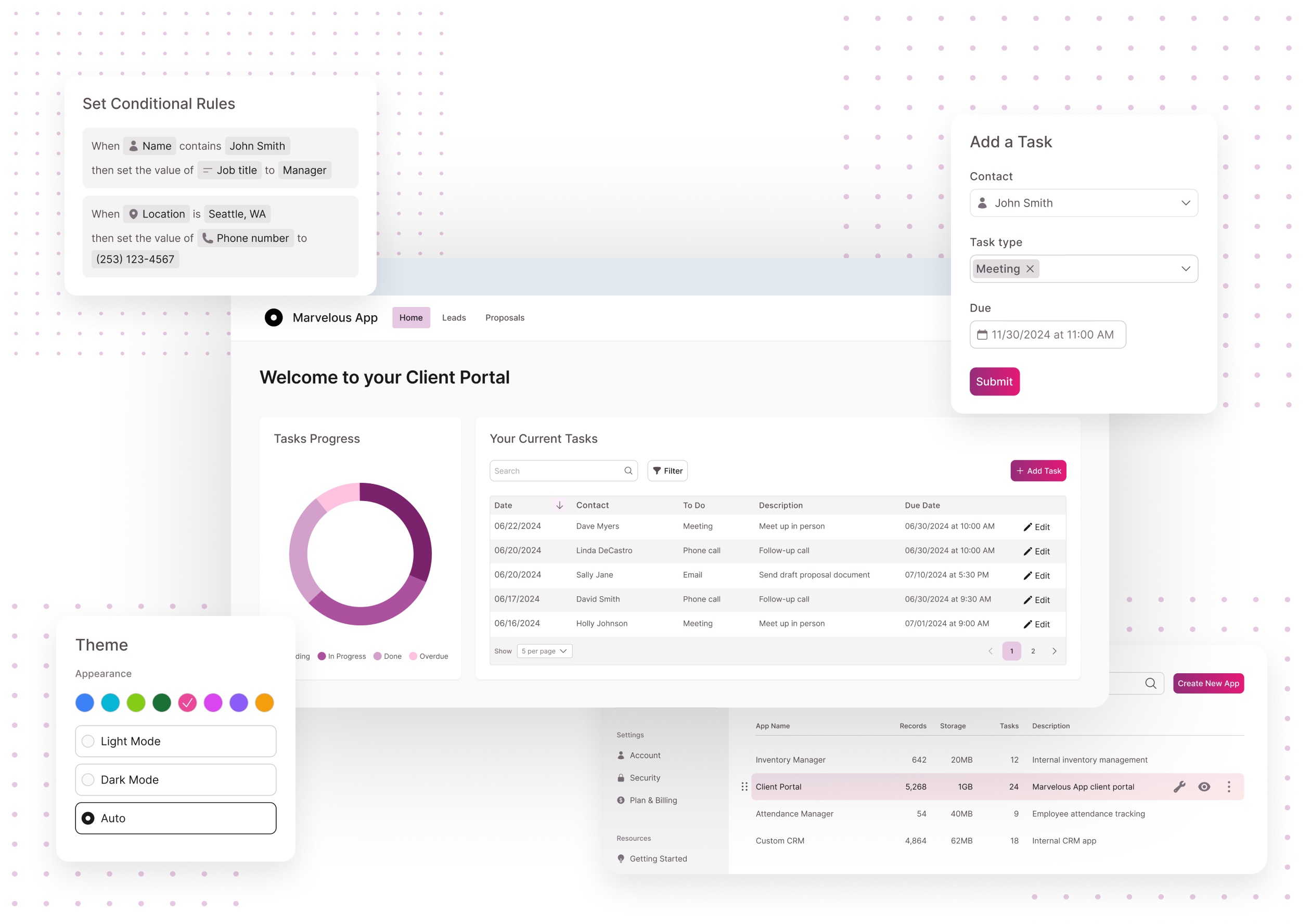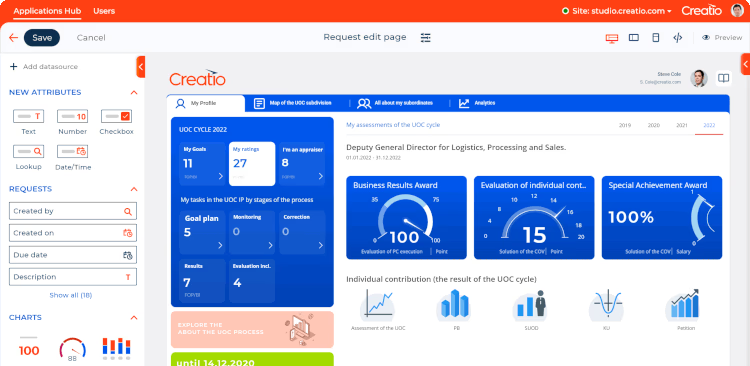No-Code Open System Data Source Creation: Simplify Complicated Growth Tasks
No-Code Open System Data Source Creation: Simplify Complicated Growth Tasks
Blog Article
Exploring the Benefits of Scalable Databases That Require No Coding Abilities for Effective Data Management Solutions
The introduction of scalable data sources that remove the necessity for coding skills provides a transformative chance for companies looking for reliable information management solutions. As we think about the ramifications of such improvements, it ends up being critical to check out just how they can improve the landscape of information monitoring and drive lasting development in an affordable atmosphere.
Improved Availability for Individuals
Improved ease of access for users is an important facet of scalable data sources, guaranteeing that data management systems are intuitive and user-friendly. In an age where data-driven decisions are critical, accessibility permits a bigger variety of individuals, including those without extensive technological expertise, to involve with database systems efficiently. This democratization of information accessibility helps with improved partnership across departments, encouraging workers to extract insights and make informed choices.
Easy to use interfaces, such as aesthetic data and drag-and-drop attributes representation, streamline complicated information interactions. These enhancements minimize the learning contour connected with typical database monitoring, allowing users to concentrate on leveraging data instead than coming to grips with technical intricacies. Furthermore, scalable data sources frequently include adjustable control panels and real-time analytics, offering customers with instant insights customized to their specific requirements.

Cost-Effectiveness and Resource Financial Savings
Reliable information administration not only rests on accessibility yet additionally on cost-effectiveness and resource savings. Scalable data sources created for users without coding skills significantly lower monetary worries usually associated with typical database administration systems. By removing the need for specialized shows knowledge, companies can allocate their resources extra efficiently, concentrating funds on core company activities as opposed to substantial training or employing competent employees.
Furthermore, these data sources frequently utilize cloud-based options, which further decrease expenses connected to hardware and maintenance. Organizations can scale their database options according to their demands, staying clear of the expenses incurred from over-provisioning resources. This versatility indicates organizations can adjust to changing demands without incurring unnecessary expenses, causing significant lasting savings.
Additionally, user-friendly interfaces improve data entrance and administration procedures, minimizing the moment invested on management jobs. This effectiveness equates right into labor expense financial savings, enabling teams to concentrate on calculated campaigns instead than regular upkeep. On the whole, taking on scalable data sources that require no coding abilities fosters a more cost-effective approach to information monitoring, making it possible for companies to optimize their sources while preserving high levels of operational efficiency.
Improved Cooperation Throughout Teams

Moreover, scalable databases assist in smooth interaction amongst employee. With user-friendly interfaces that need no coding skills, workers can conveniently develop, change, and share records or control panels customized to their specific needs. This democratization of data empowers non-technical users to Click Here contribute insights, enhancing the collaborative environment.
Additionally, these databases sustain simultaneous gain access to, enabling several individuals to work on the exact same dataset concurrently. This function improves view publisher site efficiency, as teams can participate in joint data evaluation without the threat of variation control problems. The capability to leave comments or notes straight within the data source additionally promotes dialogue and clarifies information analyses.
Streamlined Data Management Processes
In today's data-driven environment, companies acknowledge the requirement of streamlined information monitoring processes to maximize efficiency and precision. By leveraging scalable databases that require no coding abilities, services can simplify their information handling and minimize the complexities usually connected with typical data source systems. This ease of access empowers non-technical customers to engage straight with data, helping with quicker decision-making and reducing dependence on specialized IT personnel.
Streamlined information management procedures improve workflow by automating regular tasks such as information entry, recognition, and reporting. Automated data assimilation ensures that info from various sources is accumulated flawlessly, eliminating silos and fostering a combined sight of critical service metrics (no-code). User-friendly user interfaces enable personnel to manipulate data conveniently, enabling them to produce understandings that drive strategic efforts without the demand for extensive training.
This effectiveness not just accelerates operational processes yet additionally minimizes the capacity for human mistake, making certain that data remains dependable and precise. Eventually, structured information monitoring processes via scalable data sources lead to enhanced productivity, enabling organizations to concentrate on core tasks while making sure that their information monitoring techniques are reliable and reliable.
Scalability for Expanding Services

For increasing ventures, the capability read review to scale up or down is vital. A scalable database can handle an increase of data generated from brand-new consumers, items, or services, ensuring that organization procedures stay continuous. These data sources give the ability to manage peak tons effectively, which is vital throughout durations of rapid development or seasonal spikes.
In addition, many scalable data source remedies are created with user-friendly user interfaces that call for no coding skills, empowering non-technical team to manage information efficiently (no-code). This democratization of information monitoring allows companies to designate resources tactically and decrease dependence on specialized IT personnel
Ultimately, taking on a scalable database not just enhances functional efficiency however additionally cultivates an atmosphere where businesses can introduce and evolve without the restraints of traditional data source systems. This flexibility positions organizations for lasting success in today's competitive landscape.
Verdict
In conclusion, scalable databases that require no coding skills provide significant advantages for effective information monitoring. By improving data administration procedures and supplying scalability for growing organizations, such remedies enable companies to adjust to altering demands effectively.
Boosted access for individuals is a critical facet of scalable data sources, guaranteeing that data monitoring systems are user-friendly and instinctive.Easy to use interfaces, such as aesthetic data and drag-and-drop attributes representation, simplify complicated data communications. In general, taking on scalable data sources that require no coding abilities fosters an extra affordable approach to information management, making it possible for organizations to optimize their resources while maintaining high degrees of operational effectiveness.
By leveraging scalable data sources that need no coding abilities, services can simplify their data handling and reduce the intricacies usually linked with standard database systems - no-code.Structured data monitoring processes enhance process by automating regular tasks such as information entry, validation, and reporting
Report this page